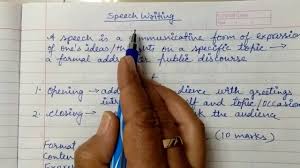 For Year 11 and 12 students studying AOS 2: Presenting Argument
For Year 11 and 12 students studying AOS 2: Presenting Argument
Year 12 students will be required to write a Statement of Intention (SOI) along with their Oral presentation.
Year 11 students will also be required to write a Statement of Intention along with their Point of View (POV).
The easiest and most comprehensive approach to the SOI is to use FLAPC = Form / Language / Audience / Purpose and Context.
The SOI can be written in 1st person / future tense = “I will choose to present my speech” because you have not said your Oral yet. The SOI is your plan for your decisions/purpose about writing the speech. The word limit is determined by each school = but is normally between 300-500 words. Always check the SAC criteria for AOS2 from your school to make sure of the SOI word limit. The SOI is worth 10 marks.
While the format for FLAPC states Form first in the line up, it is a good idea to put Context first when writing your SOI so it outlines the ‘big issue’ at hand in your Introduction.
See below FLAPC explained with example sentences for your SOI using a Speech as the form:
Form |
Type of form = a speech is a persuasive style“I will choose to adopt a persuasive style of speech that allows me to express my ideas in a logical order while assuming a sophisticated tone” |
Language |
Either formal or informal / 1st person or 3rd person perspective.Language strategies can be humorous, sombre or authoritative in tone
Establishing supporting explanations and evidence for your arguments using different types of language such as anecdotes / rhetorical questions / statistics / expert opinion / repetition / figurative language such as metaphors, similes, idioms / appeals / attacks / rebuttal “I will choose informal language, adopting 1st person perspective to demonstrate a comprehensive speech. I will incorporate a variety of language strategies such as inclusive words “we” and “us” to allow me to connect with my audience” |
Audience |
A target audience who would be realistically interested in your topic and you intend to pursuade them to agree with your point of view.“My speech will be intended for people associated with xxxx who would gain a greater understanding and appreciation of the ideas and arguments in my speech and subtly position them to agree with my opinion” |
Purpose |
What’s the message you want to send your audience? Discuss your main contention and arguments regarding your topic with reasons why you are trying to position the audience.“The purpose of my speech will be to demonstrate that there can be different outcomes from xxxxx (topic). Firstly, I will explore how xxxxx (argument 1) will change people’s understanding of xxxx (topic). Secondly, xxxx (argument 2). Thirdly, xxxx (argument 3). Fourthly, xxxx (rebuttal). Finally, my conclusion will xxxx to show the audience that I had considered the issue from different angles and that therefore my viewpoint was reliable and worth considering” |
Context |
The big issue of the topic at hand.“Societal concerns over xxxx (the big issue) have been discussed at length in the media. My speech will aim to discuss the complexity of the issue and will allow my audience to understand the arguments that I will present in a logical manner and in turn they will agree with me. Moreover, my speech will also allow them to critically reflect on their own opinion of xxxx (the issue) after evaluating my arguments” |
